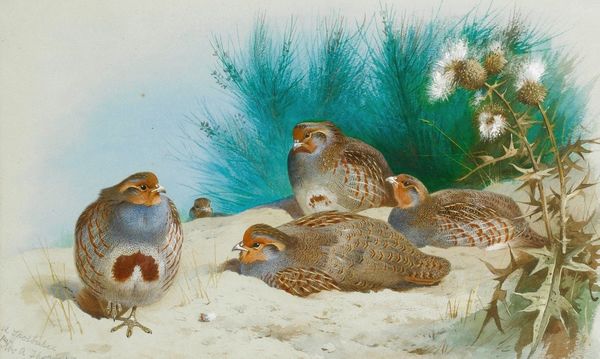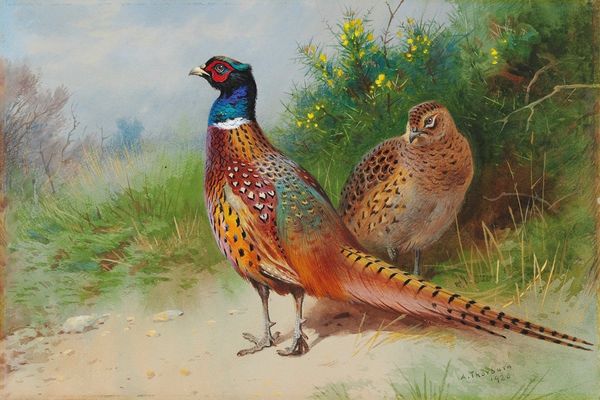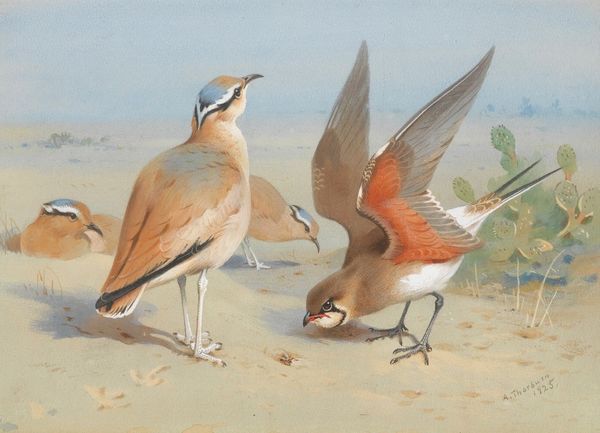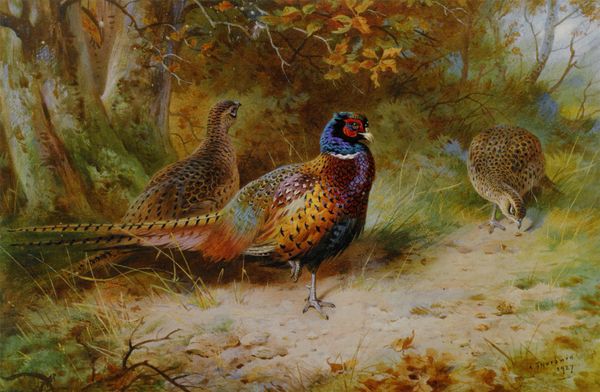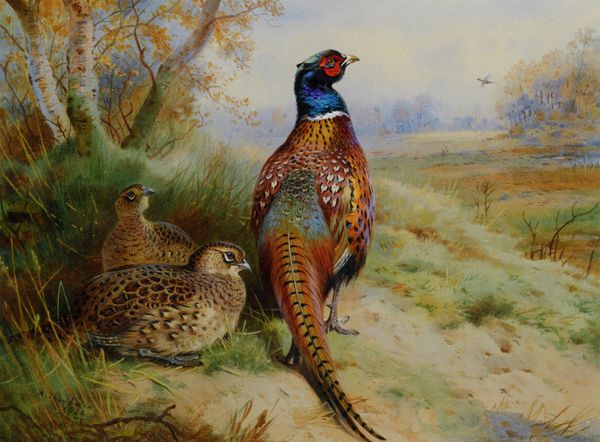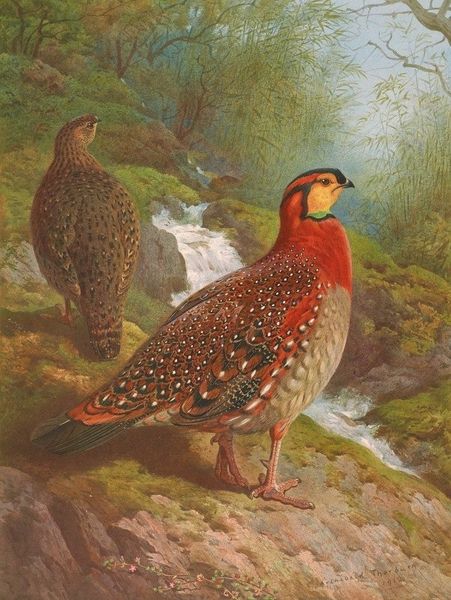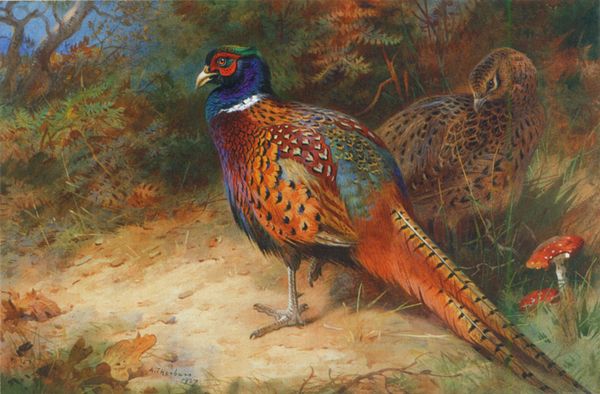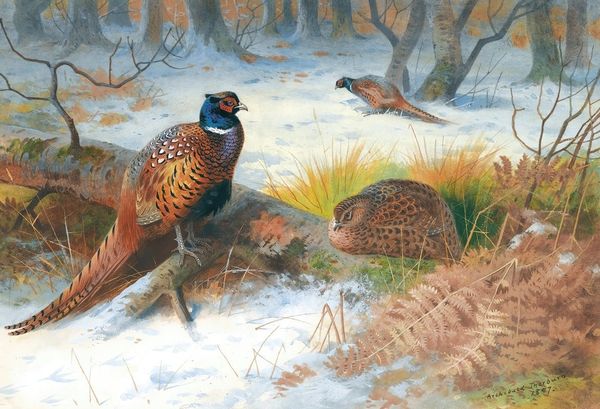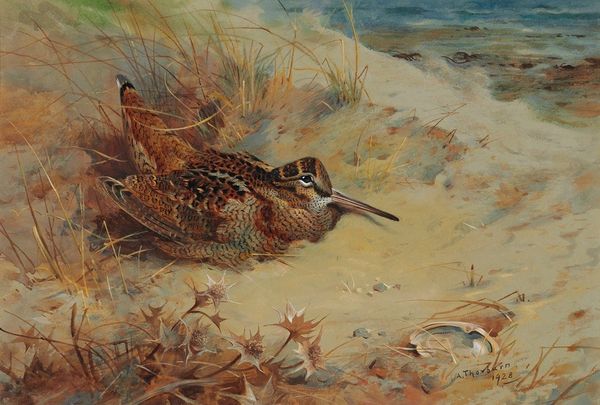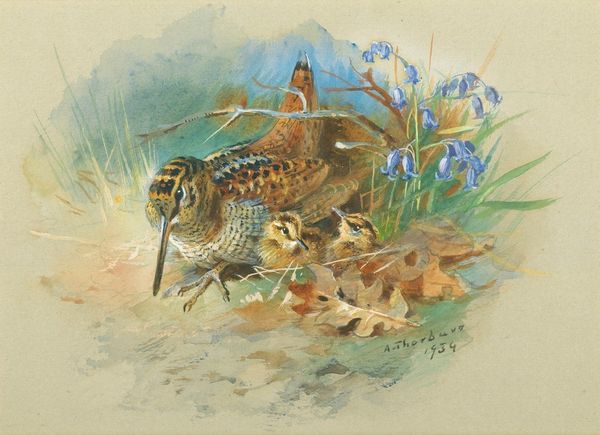
painting, watercolor
#
animal
#
painting
#
oil painting
#
watercolor
#
watercolour illustration
#
naturalism
#
watercolor
#
realism
Copyright: Public Domain: Artvee
Curator: This is Archibald Thorburn's watercolor, "French Partridge and Chicks," painted in 1915. What's your initial reaction to it? Editor: I'm struck by the softness, a certain vulnerability. It’s as if we’ve stumbled upon a private family moment, underscored by the delicate medium. Curator: Absolutely. Thorburn was known for his exacting detail. Consider his precise handling of the birds' plumage. For me, it’s fascinating to consider the labor invested in each feather rendered so meticulously, given the context of a nation at war during that period. Do the natural tones influence the cultural interpretation in any way? Editor: The textures create patterns. This bird family evokes maternal care and, beyond that, alludes to enduring symbols of fertility and family bonds. The French partridge, a common game bird, takes on a heightened symbolic weight during wartime. Curator: True, but is Thorburn critiquing consumption or simply depicting the realities of the time? This was a time of both incredible industrial production for the war and severe rationing at home. Does the naturalism hide a deeper tension between our artificial needs and true nature? Editor: Perhaps it reflects both! Realism and symbolism always find ways to coexist. It’s almost like the mother hen serves as an archetype for protection and nourishment, even amidst such human turmoil. How might his choice of watercolor influence its reception? Curator: The light washes seem deliberately chosen to capture a certain rural English idyll – to present a form of resistance against industrial culture through material representation. The watercolour makes a very specific claim here. It would perhaps fail were it a gouache, impasto or oil. Editor: I appreciate your attention to material history and context, but I can’t help but notice, too, the overall symbolic quietude that lingers. These small, fragile creatures resonate with something profound within us, especially during troubled times. Curator: Precisely. Considering the context of production, consumption and medium sheds a light on the cultural role naturalism and realism play within society. Editor: A perfect pairing of perspectives. The materials themselves contribute to an even bigger artistic dialogue of nature, society, family, culture, and resilience.
Comments
No comments
Be the first to comment and join the conversation on the ultimate creative platform.

